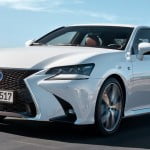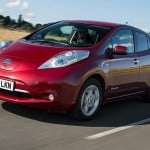
A facelifted turbocharged 911? Already? Only seems like five minutes since the last one…
Ahh, you’re thinking of the Carrera and Carrera S, whichswitched to turbo power last year. This is Turbo with capital T. Except on the rear badge, confusingly, where Porsche typography convention means a lower-case one.
Well if the common 911s are now turbocharged too, how does the real Turbo assert its identity?
Oh, you know, by being so obscenely accelerative there’ll be a time in the future when we look back with incredulity that anyone with merely the money, and not necessarily a shred of driving ability, could legally be let loose in something this rapid.
A bit nippy, is it?
Like the jaws of a bear trap. It’s the first Turbo to exceed 200mph and, while officially the zero to 62mph time is 2.9sec, pint-sized development bigwig August Achleitner says it’s several tenths quicker in the right conditions. And it’s not a case of all-gurn and no turn. The S recently lapped the Nürburgring in 7min 18sec, which makes it 2sec quicker than even the track-biased GT3 RS and a whole 9sec faster than the old Turbo S.
What’s the trick?
Beyond a driver with trouser globes made of titanium? Well, although it sticks with the old 3.8-litre six, there’s the extra 20bhp over the old S. That means a total of 572bhp, courtesy of revised inlet ports, higher fuel pressures and bigger variable geometry turbos. The 20in centre-lock wheels are also half an inch wider and the four-wheel drive system gets a faster-acting electro-hydraulically operated clutch pack to shuffle the torque about more promptly.
There are another couple of new functions: ‘dynamic boost’ minimises lag in on-off throttle situations by merely cutting fuelling, but leaving the throttle open to maintain charge pressure, while the Sports Response button on the new steering wheel-mounted driving mode selector primes the engine and transmission for big overtakes, ensuring the right cog is engaged for maximum go.
Can you have too much tech?
Maybe, but that’s not the case here. The Turbo S is still a brilliantly engaging car, fearsomely rapid in all weathers and so flattering you’ll be waiting for the postman to deliver your Le Mans call-up letter every day after you’ve taken delivery.
The steering is electrically assisted but not disappointingly over damped, unlike Porsche’s first electric-steer cars, and while there’s still no manual transmission these days, the PDK is a great match. In fact the mapping is so well judged, messing with the gearshift paddles or the newly reversed (to match a racer’s push-pull) shift pattern is entirely optional.
Predictably, grip and traction are beyond reproach. Yet far from being inert, the Turbo and S will happily indulge your liberty taking, letting you trail brake into corners and edge the rear out of line thanks to the new PSM stability system’s more lenient Sport mode. The ceramic brakes did get grumbly after sustained hard-lapping at the Kayalami launch track in South Africa but there was never any suggestion of real fade.
What about the regular Turbo? Poor relation?
Not exactly, but, you know, in for a penny (or 12,692,500, to be exact) in for £145,773. If that £19k difference sounds significant, it’s worth remembering that desirable kit like ceramic brakes and the adaptive roll control suspension costs extra on the base car but is standard on the 39bhp more powerful S.
The S is only 0.1sec quicker to 62mph but gets to 124mph in 9.9sec, a solid 0.5sec quicker. Subjectively, it feels much punchier than its little brother at higher speeds and rolls less, though the stock version is hardly a blancmange.
Verdict
If we worried that the Turbo might struggle to maintain its own character in the face of the newly turbocharged Carrera models at Porsche, we needn’t have. The Turbo, and in particular, the Turbo S, is at the top of its game. If you want a sub-supercar that’ll take abuse 365 days a year, it chooses itself.
[“source-carmagazine”]





